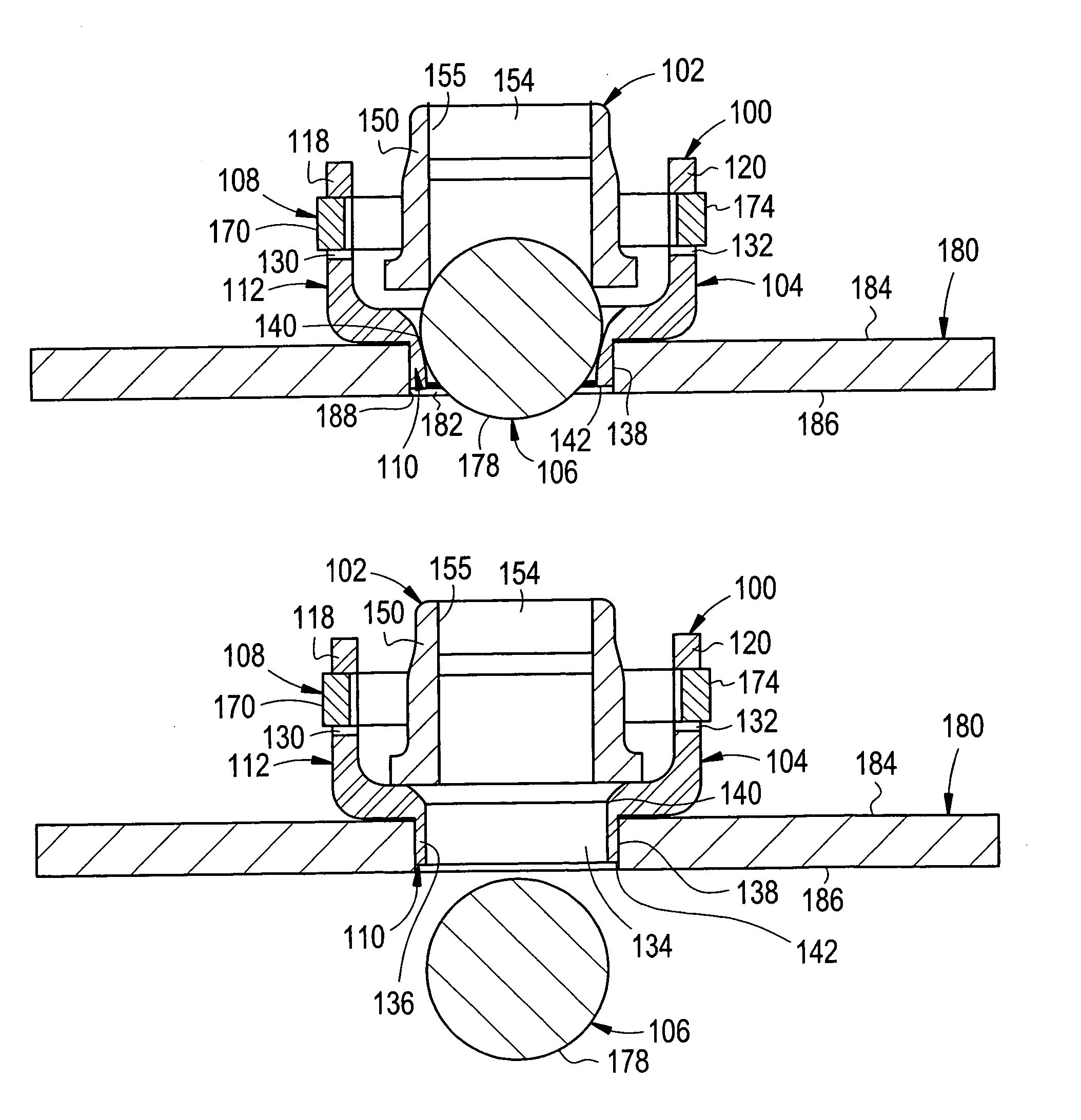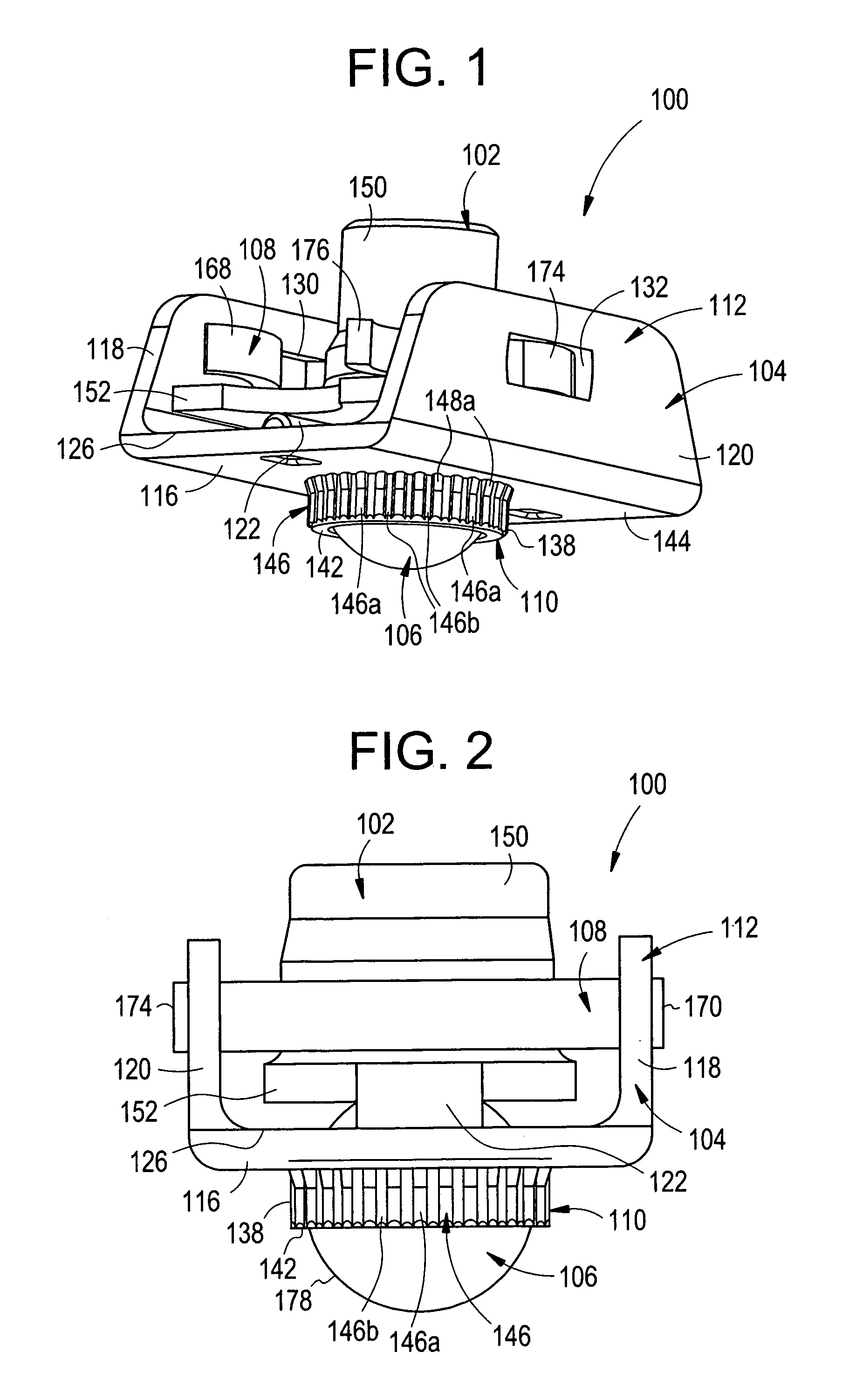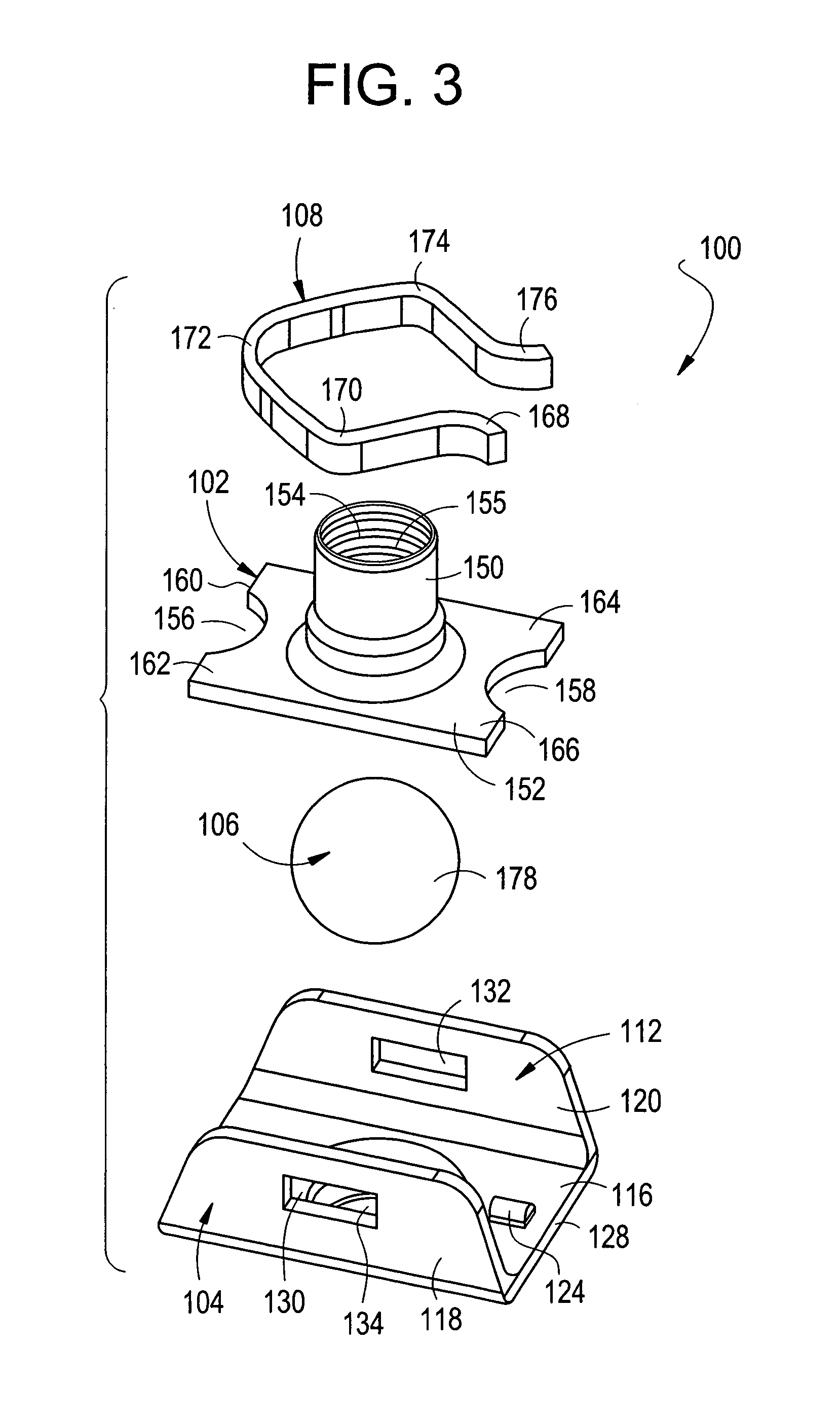Push-type rivetless nut plate and method and apparatus for installing same
a technology push-type rivet, which is applied in the direction of threaded fasteners, screwdrivers, manufacturing tools, etc., can solve the problems of rivetless nut plate flaring, screwless nut plate, cumbersome, slow, etc., and achieve the effect of simplifying the installation of rivetless nut plates
- Summary
- Abstract
- Description
- Claims
- Application Information
AI Technical Summary
Benefits of technology
Problems solved by technology
Method used
Image
Examples
first embodiment
[0063]Thus, the nut 102, the holding bracket 104, the ball 106 and the retainer 108 are preferably preassembled together to form the nut plate 100 of the invention prior to the nut plate 100 being used in operation.
[0064]In operation, the nut plate 100 is secured to a workpiece 180 by inserting the tubular portion 110 of the holding bracket 104 into an aperture 182 of the workpiece 180, such that the undersurface 144 of the bracket portion 112 of the holding bracket 104 sits on a top surface 184 of the workpiece 180, as illustrated in FIGS. 5–7. The aperture 182 has a diameter which is slightly larger than a diameter of the tubular portion 110 of the holding bracket 104, which includes the lobes 146. The aperture 182 has a length which is preferably larger than or equal to a length of the tubular portion 110 of the holding bracket 104 such that the tubular portion 110 does not extend beyond a bottom surface 186 of the workpiece 180.
[0065]Once the nut plate 100 is properly positioned...
second embodiment
[0081]Thus, the nut 302, the holding bracket 304, the mandrel 306 and the retainer 308 are preferably preassembled together to form the nut plate 300 of the invention prior to the nut plate 300 being used in operation.
[0082]In operation, the nut plate 300 is secured to a workpiece 380 by inserting the tubular portion 310 of the holding bracket 304 into an aperture 382 of the workpiece 380, such that the undersurface 344 of the bracket portion 312 of the holding bracket 304 sits on a top surface 384 of the workpiece 380, as illustrated in FIGS. 12–14. The aperture 382 has a diameter which is slightly larger than a diameter of the tubular portion 310 of the holding bracket 304, which includes the lobes 346. The aperture 382 has a length which is preferably larger than or equal to a length of the tubular portion 310 of the holding bracket 304 such that the tubular portion 310 does not extend beyond a bottom surface 386 of the workpiece 380.
[0083]Once the nut plate 300 is properly posit...
PUM
| Property | Measurement | Unit |
|---|---|---|
| flexible | aaaaa | aaaaa |
| diameter | aaaaa | aaaaa |
| length | aaaaa | aaaaa |
Abstract
Description
Claims
Application Information
 Login to View More
Login to View More - R&D
- Intellectual Property
- Life Sciences
- Materials
- Tech Scout
- Unparalleled Data Quality
- Higher Quality Content
- 60% Fewer Hallucinations
Browse by: Latest US Patents, China's latest patents, Technical Efficacy Thesaurus, Application Domain, Technology Topic, Popular Technical Reports.
© 2025 PatSnap. All rights reserved.Legal|Privacy policy|Modern Slavery Act Transparency Statement|Sitemap|About US| Contact US: help@patsnap.com



